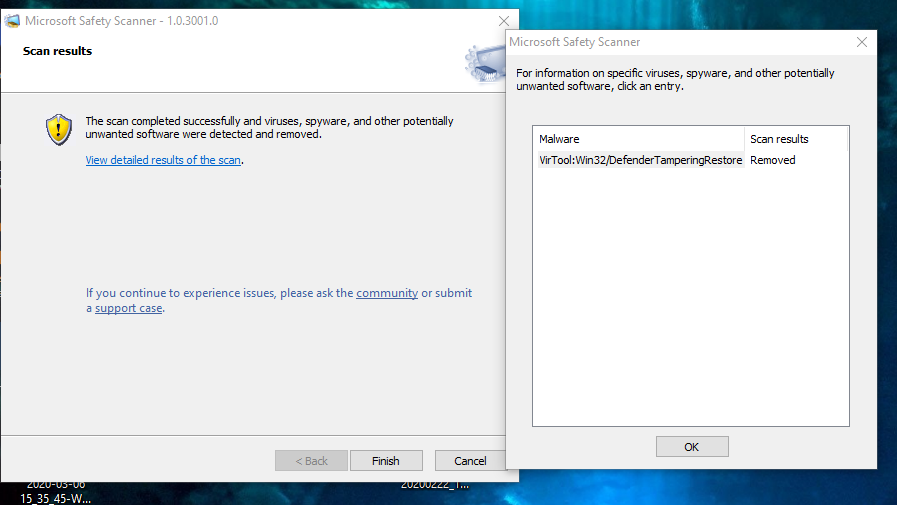
- MICROSOFT SAFETY SCANNER ON USB INSTALL
- MICROSOFT SAFETY SCANNER ON USB FULL
- MICROSOFT SAFETY SCANNER ON USB WINDOWS 10
No single anti-malware program is capable of finding every possible infection, but running scans with multiple antivirus apps is a very effective method of ridding your PC of all the malicious pieces of code that might reside on the hard drive. This probably seems like a long, drawn out process, and it is.
MICROSOFT SAFETY SCANNER ON USB INSTALL
(Run more than two if you have time.)ĥ – Visit each of the websites listed in step 3 (one at a time) and run scans with their online tools.Ħ – Download, install and run the free version of Malwarebytes and have it remove any malware found during the “Full” scan.ħ – If malware was found and removed when you ran the above scans, update your regular antivirus program and run a thorough scan with it as well.
MICROSOFT SAFETY SCANNER ON USB FULL
Removing malware with your emergency USB thumb driveġ – At the first sign that your computer has been infected, shut the system down immediately.Ģ – Plug your emergency thumb drive into your PC.ģ – Boot your PC into “Safe Mode with Networking” (instructions available here).Ĥ – Once Windows has booted into Safe Mode, navigate to the USB flash drive and run full scans with at least two of the portable antivirus apps listed in step 2 above. it to your console using the USB-C cable provided with the headset. Note: Make sure you keep the programs on your emergency thumb drive up to date with the latest versions of the software (check regularly with the download pages listed above).Ĥ – Bookmark these online malware scanners in your web browser. Go to the Bluetooth connections menu on your device and scan for available devices.
MICROSOFT SAFETY SCANNER ON USB WINDOWS 10
Of course if you already have one lying around the house that’s fine, but make sure it works well.Ģ – Download the following portable antivirus apps and copy them onto the flash drive:ģ – Label your new emergency virus removal flash drive so that you’ll know not to use it for any other purpose. Windows Defender, for example, is Microsoft antimalware software included in the Windows 10 operating system (OS) under the Windows Defender Security Center. I’ll recommend several by name because they work well and they don’t have to be “installed” – which means they can run directly from the USB drive.Ĭreating your emergency virus removal USB driveġ – Purchase a USB flash drive that will be dedicated just to this purpose. All you really have to do is purchase an inexpensive USB flash drive (a small one in the range of 8 to 16 gigabytes will work fine) and load it up with a few “portable” virus removal programs. This is why you need a plan “B” – an emergency virus removal USB flash drive.Ĭreating an emergency virus removal flash drive is easy. Others still will prevent your PC’s installed antivirus program from loading at all.

Most pieces of malicious code can be quickly removed with a normal virus scan and cleanup, but some infections are so insidious that they are difficult to detect and remove with a regular scan.Įven worse, some strains of malware can even render your PC incapable of connecting to the Internet in order to download an updated virus definition file. Regardless of how carefully you try to avoid it there’s a good chance that your PC will become infected sooner or later. Let’s face it, computer viruses, trojans and other forms of malware are a fact of life.


 0 kommentar(er)
0 kommentar(er)
